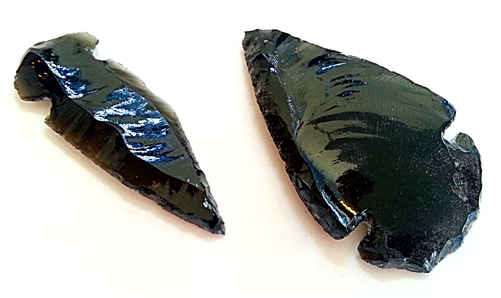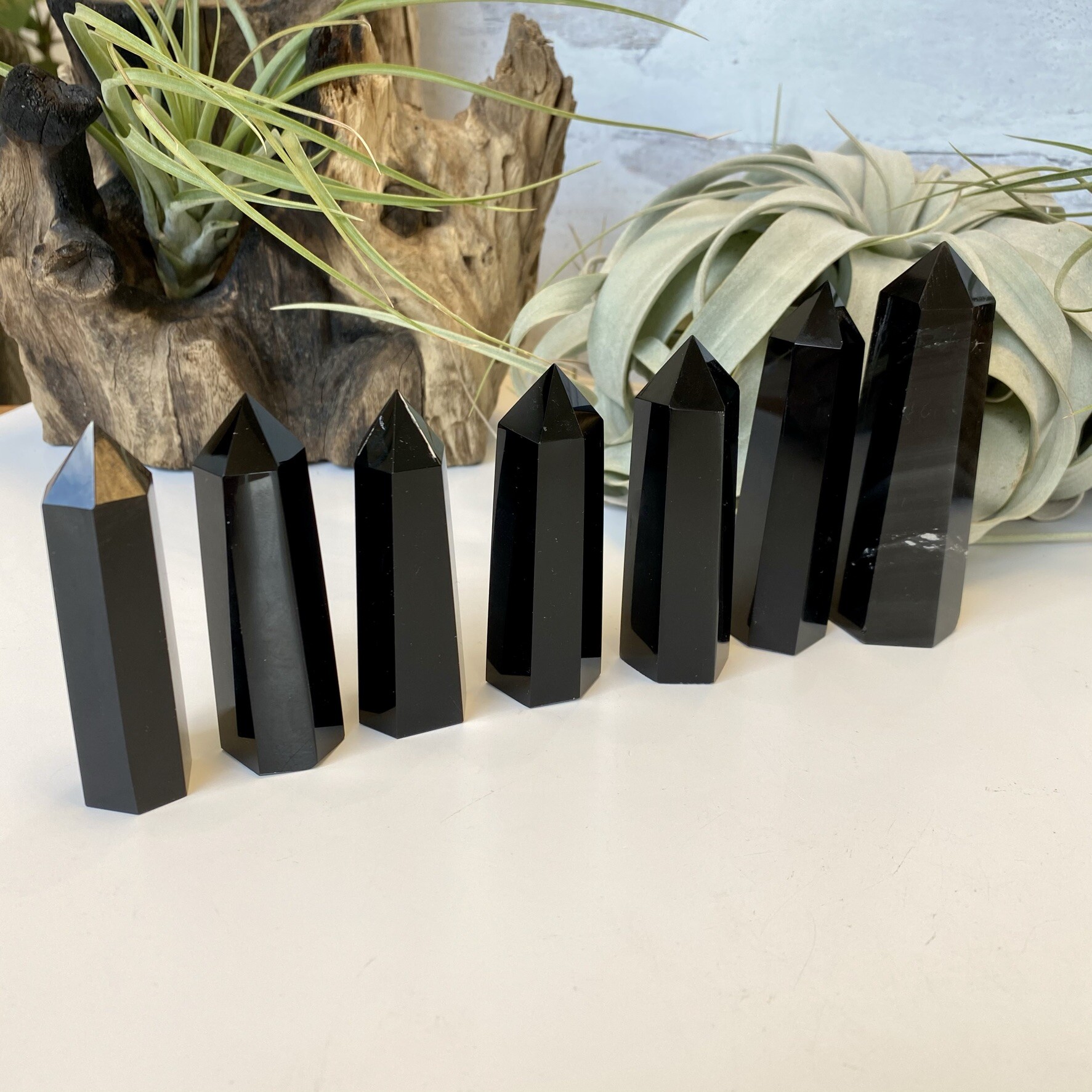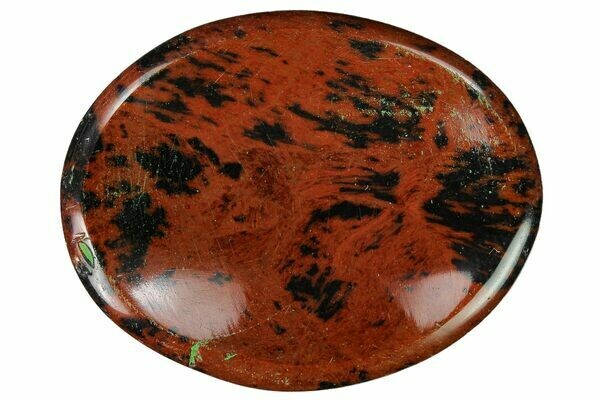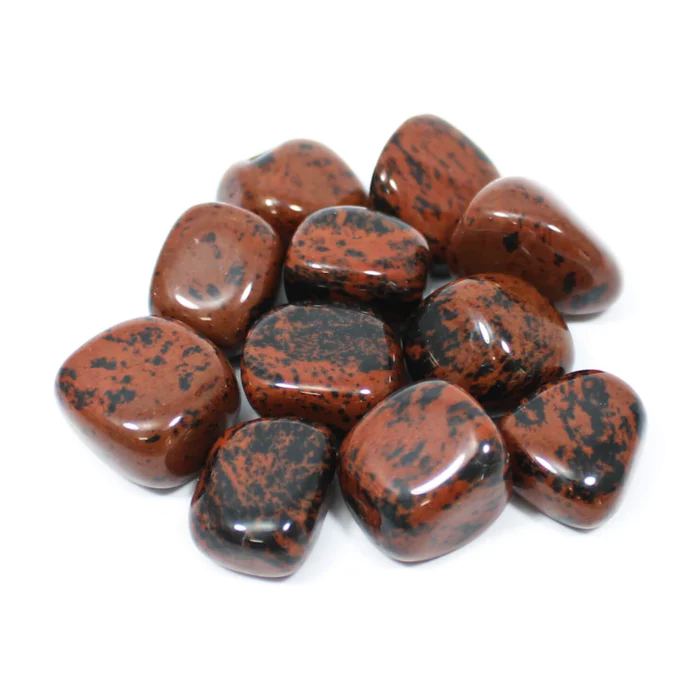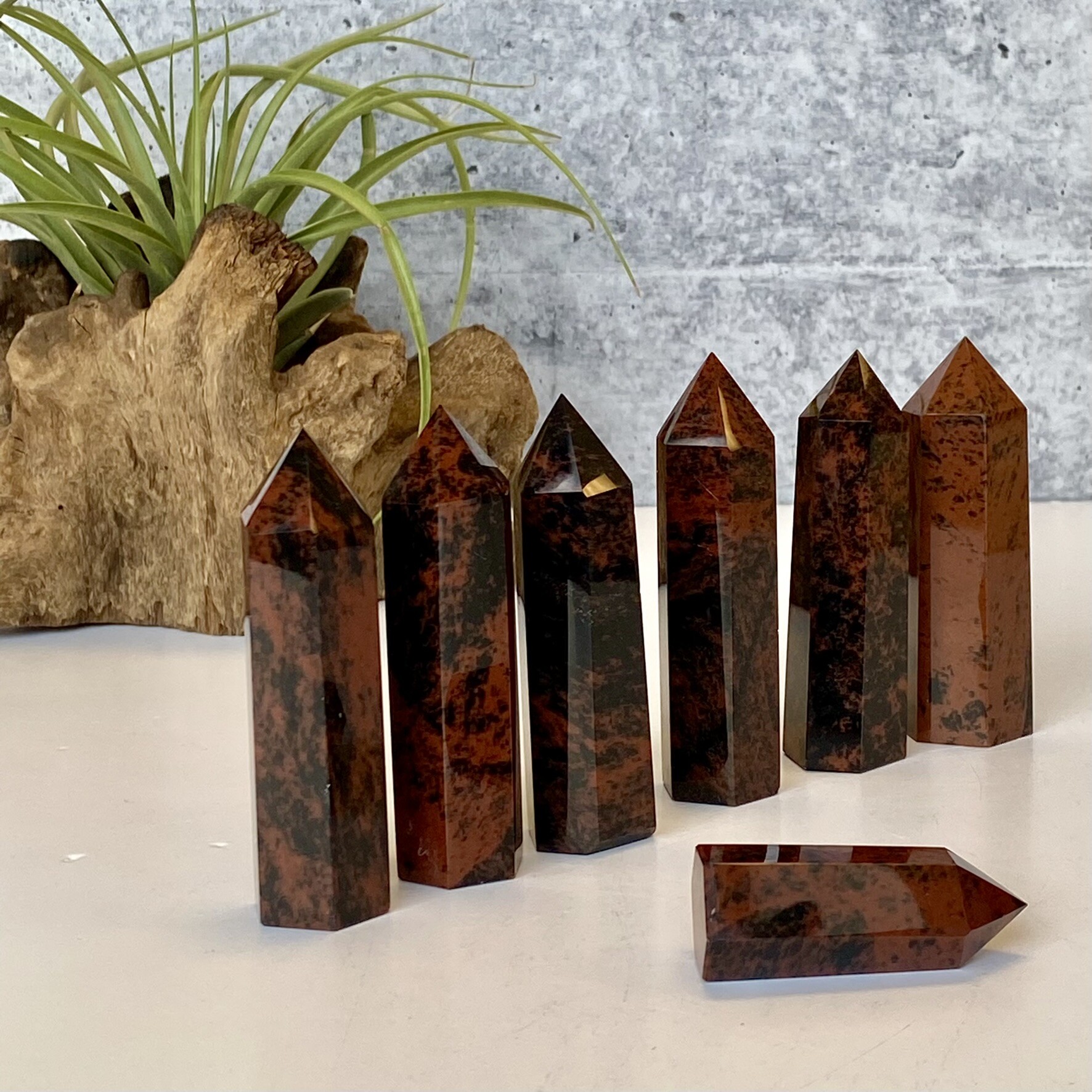Obsidian
Black · Mahogany · Goldsheen
Key Words:
Grounding · Stability · Emotional Clearing · Energy Protection · Mental Strength · Negative Thought Release · Electromagnetic Absorption
Obsidian is a naturally occurring volcanic glass that forms when molten lava cools rapidly without time to crystallize. This creates a smooth, glassy stone with sharp edges and a reflective surface. Historically, Black Obsidian was highly valued for cutting tools, arrowheads, and ceremonial objects due to its razor-sharp fractures.
Black Obsidian is best known for its strong protective energy. It acts like a shield, helping to block negativity and absorb dense or stagnant energy from your space or body. Many people place it near entryways or in workspaces for energetic protection.
Its grounding frequency helps calm scattered thoughts and bring emotional stability. If you’re feeling overwhelmed or "spread too thin," holding a piece of Black Obsidian in each hand can help restore balance and bring your awareness back to center
This stone is often used during emotional clearing or inner healing work. It can bring up buried emotions or limiting beliefs so they can be acknowledged and released—especially those tied to old relationships, fear-based thinking, or self-sabotaging habits.
Black Obsidian is also used to support self-control and clear negativity, especially in the form of unloving or obsessive thoughts. Some find it beneficial to place under a pillow to help draw out mental stress, though its intensity may also bring unresolved emotions to the surface.
It’s commonly used to absorb electromagnetic radiation, making it a helpful stone to place near electronics or Wi-Fi routers. For this purpose, Black Obsidian or Mahogany Obsidian are most effective.
Mahogany Obsidian:
Key Words:
Emotional Support · Grounded Healing · Self-Worth · Balance · Gentle Protection · Body-Mind Connection
Mahogany Obsidian, also called mountain mahogany, is a beautiful reddish-brown variety of obsidian created when iron-rich inclusions (hematite) form swirling patterns within the volcanic glass.
This variety carries a gentler grounding energy than Black Obsidian, making it an ideal choice for those processing old emotional wounds or trauma. It helps surface repressed feelings in a way that feels safe and manageable, rather than overwhelming.
Mahogany Obsidian supports healing through balance. It reminds us to care for our emotional, physical, and spiritual needs equally, and strengthens awareness of the mind-body connection.
This stone is often used in times of healing, especially when working through feelings of guilt, shame, or low self-worth. It provides quiet strength and helps release patterns rooted in fear or past pain.
Mahogany Obsidian also carries the combined properties of both obsidian and hematite, enhancing its grounding and stabilizing effect while still allowing room for reflection and insight.

